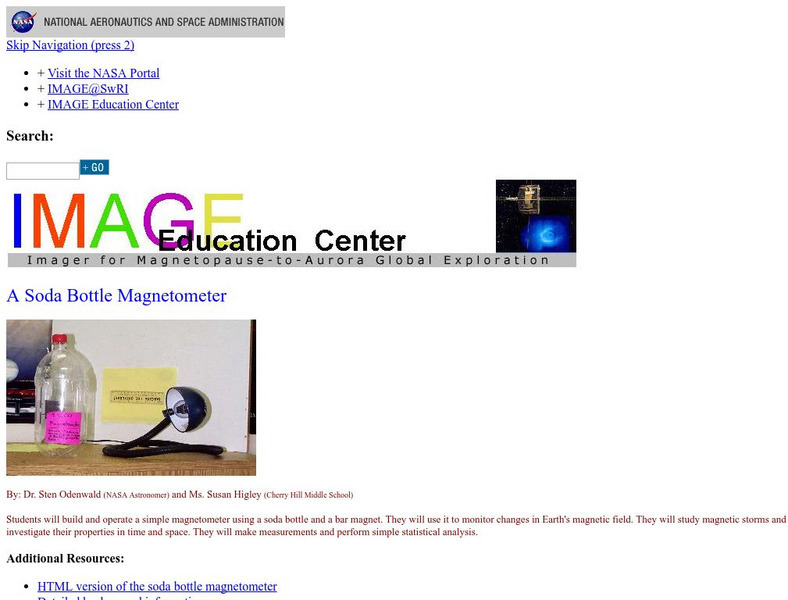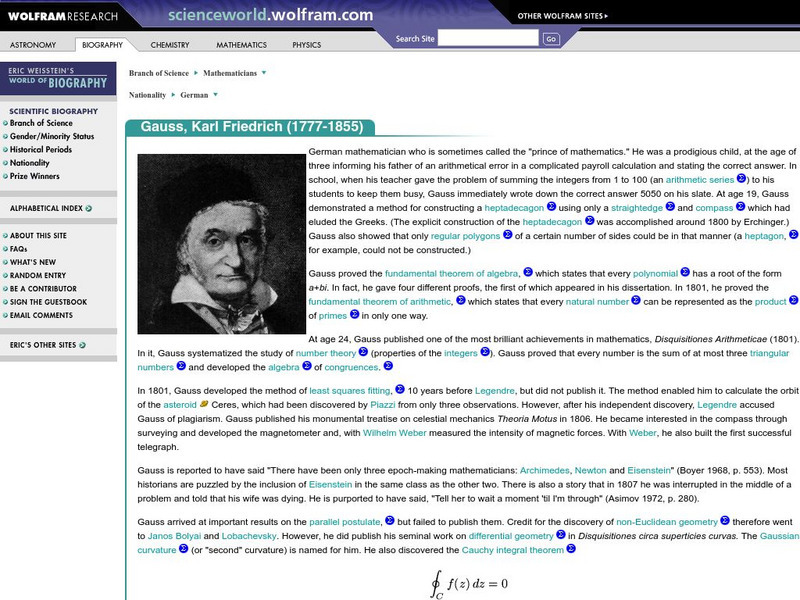Curated OER
Terrabagga Activity Using a Magnetometer
Clever! Earth science learners construct a model of a planet containing a magnetic core. The planet, Terrabagga, is made out of a paper grocery bag, magnets, a dead D battery, and rubber bands. Pictures of each step of the construction...
Curated OER
The Magnetometer
Physical or earth science pupils prepare a magnetometer by inducing magnetism into a pair of straight pins. As the pins hang from a thread, they can be used to detect the magnetic field or poles of a magnet. They could also be used as a...
Curated OER
Magnetometer Extension Activities
Learners observe magnetic fields and locate the position of "ore deposits" patterns using models and maps. In this magnetometer lesson students complete a hands on activity and a reading/writing exercise.
Curated OER
The Magnetic Sun
Students follow steps to build a simple version of a magnetometer, an instrument capable of detecting areas of strong magnetic field. Students use the magnetometer to investigate models of the Sun and examine images of the Sun.
Curated OER
DESIGN AND BUILD A MAGNETOMETER
Learners brainstorm and design an instrument to detect magnetic field direction. The design approximates the design included in this activity. They build a functioning magnetometer, a device for detecting the relative direction of the...
NASA
Nasa: Image Science Center: Soda Bottle Magnetometer
Help students explore Earth's magnetic field with this soda bottle magnetometer activity. Follow links to other space projects for the classroom.
NASA
Nasa Space Science Data Archive: Galileo Project Information
This is the homepage of all of the archived information about and from the Galileo Mission. Included is data from the flybys of Venus, Earth, Moon, and Asteroids Gaspra and Ida, as well as the current data from Jupiter and its moons. See...
University Corporation for Atmospheric Research
Ucar: The Sun Earth Connection: The Magnetic Sun
Students will build a simple version of a magnetometer and use it to discover the types of areas of the Sun that have very strong magnetic fields. Students will then describe what the types of features associated with the Sun's strongest...
Wolfram Research
Wolfram Science World: Karl Friedrich Gauss (1777 1855)
A comprehensive summary of Gauss work, primarily mathematical. An incredible number of hotwords, along with many links to other scientist and mathematicians.
National Geographic
National Geographic: Build a Magnetometer
Hands-on project where the learner constructs a magnetometer to monitor and measure changes in earth's magnetic field. These changes can then be used to track solar storms.
CK-12 Foundation
Ck 12: Earth Science: Magnetic Evidence for Seafloor Spreading
[Free Registration/Login may be required to access all resource tools.] How magnetic reversals on the seafloor provide evidence for seafloor spreading.
CK-12 Foundation
Ck 12: Magnetic Polarity Evidence for Continental Drift
[Free Registration/Login may be required to access all resource tools.] How magnetic polarity provided more evidence for moving continents.
National High Magnetic Field Laboratory
Magnet Academy: Carl Friedrich Gauss
Although he is best known as one of the greatest mathematicians of all time, Carl Friedrich Gauss was also a pioneer in the study of magnetism and electricity. To facilitate an extensive survey of terrestrial magnetism, he invented an...
American Geosciences Institute
American Geosciences Institute: Earth Science Week: Magnets at the Core
Young scholars simulate magnetic pole reversal to study the movement of Earth's magnetic poles.
National High Magnetic Field Laboratory
Magnet Academy: Magnetometer 1832
The Earth, the moon, the stars and just about everything in between has a magnetic field, and scientists use magnetometers when they need to know the strength of those fields.
















